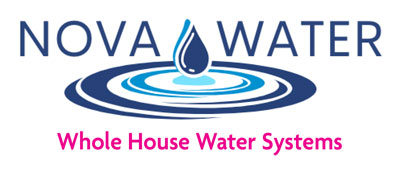PFAS (per- and polyfluoroalkyl substances) are a large family of man-made chemicals that have been widely used since the 1940s. They can be found in many everyday products, such as non-stick cookware, food packaging, stain and water repellents, and even firefighting foams. Despite their widespread use, PFAS has recently gained attention because of the potential adverse impacts they may have on both human health and the environment.
Health Concerns
PFAS are commonly known as “forever chemicals” because of their resistance to breaking down over time. This characteristic leads to their accumulation in the environment, as well as in our bodies, over extended periods. The possible health consequences of coming into contact with these substances can be unsettling. Research indicates that these may encompass irregular hormone levels, a compromised immune system, and an elevated susceptibility to specific types of cancers, such as testicular, prostate, and kidney cancers. Additionally, exposure to PFAS has been linked with decreased fertility and other adverse reproductive effects, developmental effects in children, and elevated cholesterol levels. It’s important to understand that while these potential effects are alarming, more research is needed to understand the long-term impact of PFAS exposure fully.
Environmental Impact
PFAS have also been found to pose a threat to the environment. These chemicals are known for their persistence in the environment. This means they do not break down easily and can remain in the soil, water, and air for long periods. This leads to their widespread contamination of drinking water sources, as well as potential harm to wildlife. PFAS have been linked to the decline of bird populations and reproductive issues in fish. Additionally, they can accumulate in the food chain, potentially exposing humans to higher levels of these chemicals through consumption.
Exposure to PFAS
People can encounter PFAS in several everyday situations, underscoring the importance of being aware of these chemicals and how they can enter our bodies. Regular use of household items, many of which we’ve mentioned, can lead to PFAS exposure. Furthermore, the ingestion of food and water tainted with PFAS is another common way these chemicals can get into our system. This contamination often happens as PFAS persist in the environment, ultimately making their way into our food and water supplies. Understanding these exposure routes is key to mitigating the risks and protecting both our health and environment from the effects of these ‘forever chemicals’.
Identifying PFAS in Your Drinking Water
Knowing if your drinking water is contaminated with PFAS is a significant step towards ensuring your health and safety. PFAS contamination hotspots often include industrial areas that manufacture PFAS-containing items, landfills, airports, military bases, and farmlands where biosolids are recycled for use as fertilizer. However, recent studies have confirmed that PFAS contamination in drinking water is not confined to these areas but is widespread across the country. To definitively ascertain the presence of PFAS in your water, it is recommended to have your drinking water tested at a certified laboratory. Certified labs can be located via the EPA’s website or by reaching out to your state’s agency responsible for drinking water regulation. If your water supply is public, inquire with your municipality about their PFAS mitigation measures. Some municipalities proactively test for PFAS despite no current regulatory requirements demanding such tests. For those using private wells, the responsibility for testing and treatment lies solely with the individual. At present, PFAS are not federally regulated, although a proposed regulation from the U.S. Environmental Protection Agency (EPA) could be finalized by late 2023. In the interim, some states have taken it upon themselves to enact their own PFAS regulations.
What To Do When Your Water Has PFAS
If your water supply tests positive for PFAS, don’t panic. There are several effective water treatment technologies available to reduce PFAS in your home’s drinking water. Activated carbon filtration, reverse osmosis (RO), and anion exchange are among the most widely used and effective methods. When selecting a treatment method, look for products certified to NSF/ANSI 53 or NSF/ANSI 58 standards for PFAS reduction. Keep in mind that the effectiveness of each technology highly depends on the concentration and type of PFAS found in your water, as well as other factors, such as additional contaminants present that you might choose to treat.
As you plan for treatment, you’ll need to decide whether to treat your water at the Point of Use (POU) – such as a kitchen faucet or refrigerator water dispenser – or treat the entire water supply where the water enters your house (Point of Entry or POE). In most cases, a POU device will suffice to treat PFAS. However, if your water’s PFAS levels are exceptionally high or if you have other contaminants, you might consider a POE system to ensure clean, safe water throughout your home. Take the time to understand your unique situation, consult with experts, and choose the right solution for your needs.
Conclusion
In conclusion, PFAS is an urgent concern for both our health and the environment. As these ‘forever chemicals’ continue to persist, it becomes increasingly crucial for us to stay informed about their impacts and take pragmatic steps toward reducing our exposure. Nova Water, a leader in water treatment, is here to help you navigate through this challenge and ensure the safety of your water. Our range of high-quality, certified filtration solutions is designed to effectively reduce PFAS in your water supply, safeguarding your health and peace of mind. Protect yourself and your loved ones from the effects of PFAS today by reaching out to Nova Water. Your water safety is our top priority.

